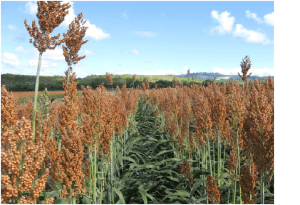With more acres planted in grain sorghum this year than any previous year, some unusual questions have been posed. The most common one that doesn’t really apply to management issues is “Why are some plants significantly taller than others and why is it so random?” Since I’ve wondered this same question in the past I decided to look in to it a little further.
Grain sorghum has five off-types or variants: grain outcrosses, height mutation, and forage, johnsongrass, and shattercane outcrosses; these are ranked in order of least important to most important for sorghum breeders. The height mutation is the most prevalent off-type and occurs naturally when two inbreds are crossed. These off-types are genetically identical to the parent line with just one mutant gene that allows the plant to grow taller than others in the field. Grain sorghum has four genes that influence height and three of those genes typically promote short plants, with only one promoting more apical growth; this is why sorghum is sometimes referred to as “3-dwarf sorghum.” However, one of the three dwarf genes is unstable at times and can shift to promote a taller plant. This is when the height mutation can be seen in the field.
On average, it is expressed in about 1-2% of the crop and really only affects the aesthetics of the field. On occasion these plants will be more vulnerable to lodging or get wrapped up in the reel when harvesting, but for the most part they are harmless and cause no significant yield loss
Photo credit: aganytime.com


